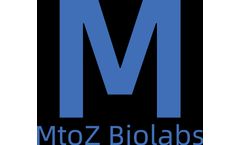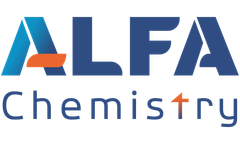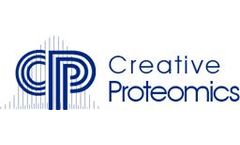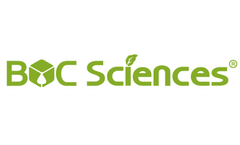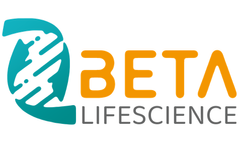Physiology From Gene To Function Articles & Analysis: Older
38 articles found
Secretory proteins refer to those proteins that are synthesized by cells and secreted to the outside of the cell. They play an important role in many biological processes such as signal transduction, cell communication, immune response, hormone secretion, and so on. These proteins are usually synthesized in the endoplasmic reticulum (ER) of the cell and then transported out of the cell through a ...
Ubiquitination is a post-translational modification process that involves various biological processes, including signal transduction, cell cycle regulation, cell stress responses, and cell apoptosis. It plays a crucial role in maintaining protein homeostasis, regulating various biological reactions in cells, and ensuring the normal physiological functions of organisms. Immunoprecipitation is a ...
Bile, a complex fluid produced by the liver and stored in the gallbladder, plays a crucial role in the digestion and absorption of fats, fat-soluble vitamins, and other essential nutrients. Ox bile extract powder, derived from the bile of oxen, is a natural supplement that has garnered significant interest in the scientific and healthcare communities for its versatile physiological functions and ...
Enzymes are the fundamental building blocks of life, playing crucial roles in countless biological processes. One such remarkable enzyme is Native Porcine Prolidase, which has garnered significant attention in the scientific community due to its unique properties and diverse applications. In this article, we will delve into the intricacies of this remarkable enzyme, exploring its structure, ...
Food nutrition enhancer, also called food nutritional fortifier, refers to natural or synthetic nutrients added to food in order to increase its nutritional content. It can not only supplements people's daily nutritional intake, but also has a positive effect on disease prevention and control. The food nutrition enhancers can be divided into four main categories as following. Vitamins Vitamins ...
Each of these components plays a crucial role in supporting various physiological functions in the human body, and their supplementation can help to fill nutrient gaps and promote overall health. ...
What is neuroplasticity? The ability of the nervous system to respond to external and internal stimulations and to change its activity based on these changes. By responding to these stimuli it is meant to reorganize its structure of individual centers and their functional interconnections. Physiologically, these plastic changes can be observed during the actual development of the nervous system, ...
In the realm of biological sciences, bile acids stand as pivotal molecules, playing a multifaceted role in various physiological processes within organisms. Bile acids are specialized molecules synthesized from cholesterol within the liver. These amphipathic compounds possess a hydrophilic region (carboxylic acid moiety) and a hydrophobic region (steroid backbone). Their distinctive structure ...
Source of Marine Polysaccharides Marine polysaccharides are primarily sourced from a diverse range of marine organisms that thrive in oceans and seas. Seaweeds are the primary and most abundant source of marine polysaccharides. Seaweeds with high polysaccharide content, such as red algae (Rhodophyta), brown algae (Phaeophyceae), and green algae (Chlorophyta), have been extensively studied for ...
Recently, with the advent of cutting-edge gene manipulation and control techniques, increasing emphasis has been laid on comprehending the role of epigenetic induction in facilitating cell growth. ...
In recent years, PROteolysis TArgeting Chimeras (PROTAC), which utilizes the cell's own degradation mechanisms to eliminate specific disease-related proteins, has emerged as one of the most promising methods. Apart from PROTAC, various targeted protein degradation (TPD) strategies are emerging, involving molecular glue, Autophagy-Targeting Chimera (AUTEC), Autophagosome Tethering Compound ...
The Mechanism Ionic channels expression systems function based on recombinant DNA technology. They utilize plasmid vectors---vessels that carry the genes of interest---to express the required ionic channels. ...
About Tumor Suppressor Genes A tumor suppressor gene, also known as anti-onco gene, is an essential component of the body's defense against cancer. ...
Introduction: Ox bile extract powder, derived from ox bile, is a natural product with a wide range of applications. It contains essential components such as bile acids, cholesterol, bilirubin, and fatty acids. Through meticulous preparation processes, it is transformed into a powdered form, enhancing its stability and convenience. Ox bile extract powder exhibits diverse applications in the fields ...
Cardiovascular safety liabilities caused 52.3 % of 44 marketed data from 1980 to 2011, and cardiovascular disease remains the leading cause of death globally, yet only 8.7% of cardiovascular drugs successfully pass clinical trials. These statistics demonstrate the need to address a patient’s specific genetic make-up and phenotype by adopting a personalized treatment methodology for ...
A new structural target for drug development against COVID-19 has been unveiled today by Sibylla Biotech in collaboration with the Italian National Institute of Nuclear Physics (INFN), the University of Trento and University of Perugia.The breakthrough drug discovery strategy pioneered by Sibylla in this study would not only promise to reduce the risk of drug resistance and harmful side effects, ...
Catalysis Enzymes are a class of biological catalysts. They govern many catalytic processes such as metabolism, nutrition, and energy conversion of organisms. Most of the reactions closely related to life processes are enzyme-catalyzed reactions. These properties of the enzyme enable the intricate process of material metabolism in the cell to proceed in an orderly manner, and to adapt material ...
Lipoprotein lipase (LPL) is a glycoprotein synthesized and secreted by parenchymal cells such as adipocytes, cardiomyocytes, skeletal muscle cells, mammary cells, and macrophages, with a molecular weight of 60ku and containing 3-8% carbohydrates. The physiological function of LPL is to catalyze the breakdown of TG in the core of CM and VLDL into fatty acids and ...
Sources of Fat Fat, also known as triglyceride, is made by condensing one molecule of glycerol and three fatty acids. The source of fatty acids in the body: one is the body's own synthesis, and the other is the food supply. Some unsaturated fatty acids cannot be synthesized by the body and depend on food supply, called essential fatty acids. There are mainly two kinds, one is the ω-3 series ...
In order for cellular mitochondria to encode protein genes for expression, mitochondria possess protein systems that enable the replication, transcription and translation of their DNA. ...


